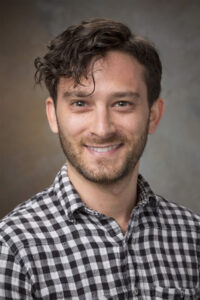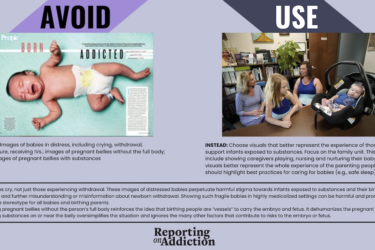
The words “electroconvulsive therapy” elicit visions of Randle McMurphy, the character Jack Nicholson played in the 1975 blockbuster “One Flew Over the Cuckoo’s Nest,” filmed at Oregon State Hospital — the actual mental institution at the center of the novel the film is based on.
In one key scene, lasting a few seconds, McMurphy undergoes electroconvulsive therapy (ECT). He turns beet red, seizes furiously, gasps and grimaces as several white-uniformed aides huddle overhead, making sure his jerking body doesn’t fall off the gurney.
However hyperbolic that fictionalized scene, Dr. Brandon Kitay, Emory Healthcare’s director of behavioral health integration, says it draws on some earlier misuses of 82-year-old ECT that have been, by far, more the exception than the rule.
The ECT that Kitty Dukakis, wife of former Massachusetts Gov. Michael Dukakis, underwent and championed in her 2006 book, “Shock,” co-authored with journalist Larry Tye, tells a truer story of ECT and how it achieved for her what 25 years of prescribed anti-depressants had not.
That was Kitay’s message in an October webinar that the Treatment Advocacy Center hosted for clinicians, patients, their relatives and mental health advocates. The presentation aimed in part to highlight his and other clinicians’ efforts to remove the stigma around ECT, an outpatient procedure that usually takes about 10 minutes.
ECT isn’t available to many U.S. patients who might benefit from it, Kitay said. The treatment has been most effective for people with drug-resistant depression, a group that accounts for about 30% of patients with major depressive disorder. It’s also been shown to be effective in treating bipolar disorder, though, given the nature of that illness, it’s harder to precisely count how many in that group are drug-resistant.
This therapy has also been used to treat some forms of schizophrenia and catatonia. The biography of the Italian physician credited with administering the first ECT spotlights a patient who’d been hospitalized with catatonia for four years, but after four of the seizure-inducing treatments, could walk, talk and feed himself, according to “A Brief History of Electroconvulsive Therapy,” published in September 2020 by the American Journal of Psychiatry. That article also noted that, during the seizure, “patients…suffered from sympathetic overdrive and a profound sense of terror.” Other researchers began refining the treatment, aiming, among other things, to reduce risks of a heart attack occurring during ECT, according to the article.
How ECT works
A team that includes a psychiatrist, anesthesiologist and nurse(s) puts the patient to sleep, gives them a muscle-relaxant and positions electrodes on their scalp that emit convulsion-inducing electricity, according to Mental Health America. Patients awaken a few minutes later with some confusion and no memory of the procedure. The treatments typically are done three times a week for a finite amount of time. Patients are prescribed medicine to prevent relapse during treatment.
The constraints limiting the availability of ECT include:
- A comparative lack of well-trained physicians to administer ECT. Twelve of the nation’s 200 psychiatric residency programs produce a third of ECT practitioners, said Kitay, who is researching how to train ECT practitioners remotely.
- A disproportionate number of states either have no laws or restrictive laws about ECT treatment. They include California and Texas, which rank No. 1 and No. 2 as the nation’s most populated states. In California, for example, doctors who administer ECT must have three other physicians formally agree that a patient has the mental capacity to agree to the treatment. “They don’t require that for a heart transplant,” Kitay said, “or any other treatment in medicine.”
- Failure of some health care systems, including those whose executives also have succumbed to the ECT stigma, to provide adequate space for ECT, which typically is administered on an outpatient basis.
- Adequate transportation for patients who cannot drive on the day of their treatment and shouldn’t be entrusted to, say, a taxi driver unknown to them, Kitay said.
Despite ECT’s proven successes, it isn’t a panacea, said Kitay, an interventional psychiatrist. For some with severe psychosis the “best outcomes are that patients tend to function better, even if all their auditory hallucinations or delusions do not get better.”
He also said there is a great need for large, longitudinal studies of biomarkers; brain scans; gauges to ensure someone does not have a prolonged seizure while at home, post-treatment; and other measures of outcomes for ECT patients and control groups.
“Usually, what I am first confronted with, as a psychiatrist who recommended this is, ‘Are you crazy?’” Kitay said, adding that the scene in Cuckoo’s Nest of a patient “getting unmodified ECT…is what even physicians envision. “There is a considerable stigma burden and an uphill battle…”
Resources for reporters
- Here are FDA rules on ECT.
- “Modern Electroconvulsive Therapy: Vastly Improved yet Greatly Underused,” an analysis published in JAMA in 2017.
- The September 2021 issue of “The Journal of ECT” explores ECT during COVID-19, sham ECT therapies and ECT use for children and teens.
- Interventional Psychiatry: A practical introduction to modern ECT, rTMS, and ketamine antidepressant therapy for established psychiatric providers.
- Barriers to the Implementation of Electroconvulsive Therapy (ECT): Results From a Nationwide Survey of ECT Practitioners, Kitay’s research published in the Psychiatric Services Journal.







